Researchers Wei San Loh and Robert Noland used data collected online to understand the used electric vehicle (EV) market.
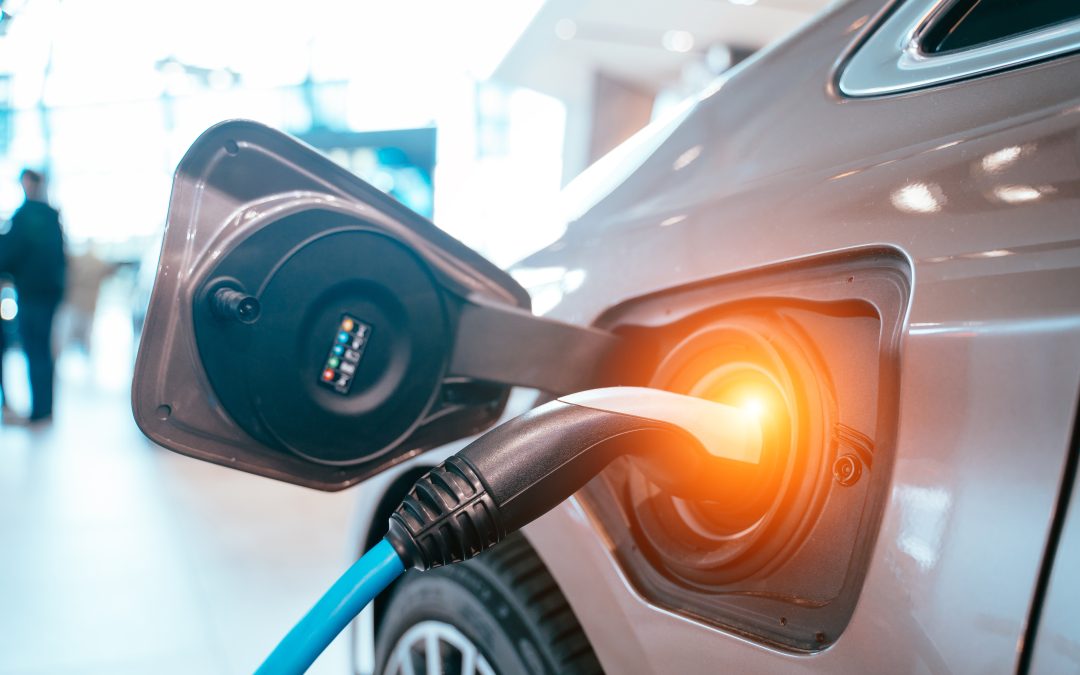

Researchers Wei San Loh and Robert Noland used data collected online to understand the used electric vehicle (EV) market.
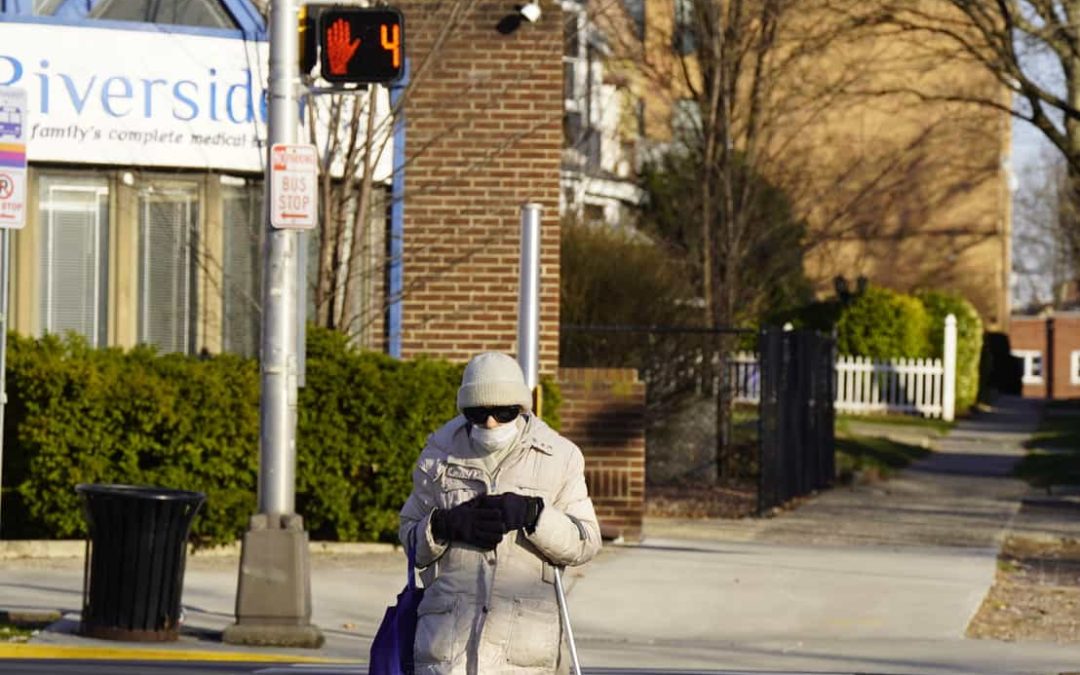
The researchers investigated the relationship between people who worked from home during the pandemic and how often they walked before, during, and after COVID.

In this study, researchers Hannah Younes, Robert B. Noland, and Clinton J. Andrews used traffic camera footage to observe the behavior of over 700 shared e-scooters and privately owned bicycles in Asbury Park, New Jersey. The authors discuss policy implications with regard to safety and gender differences between the two modes of transit.
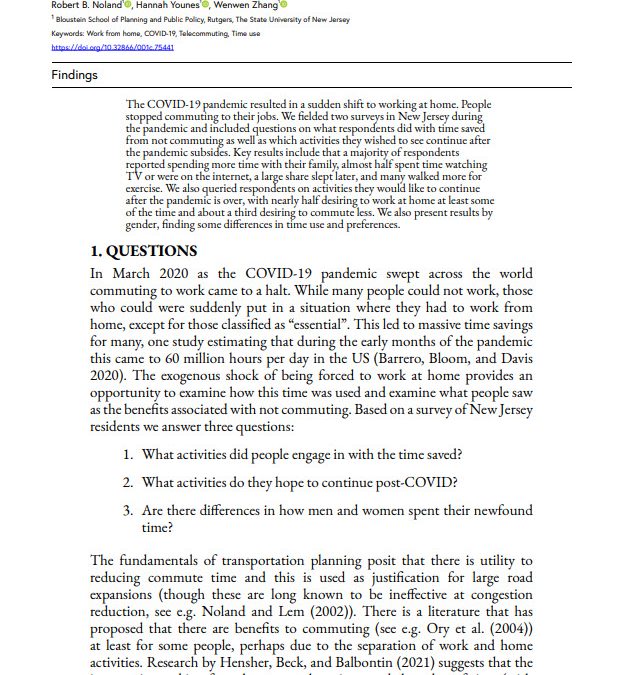
The researchers fielded two surveys in New Jersey during the pandemic and included questions on what respondents did with time saved from not commuting as well as which activities they wished to see continue after the pandemic subsided.
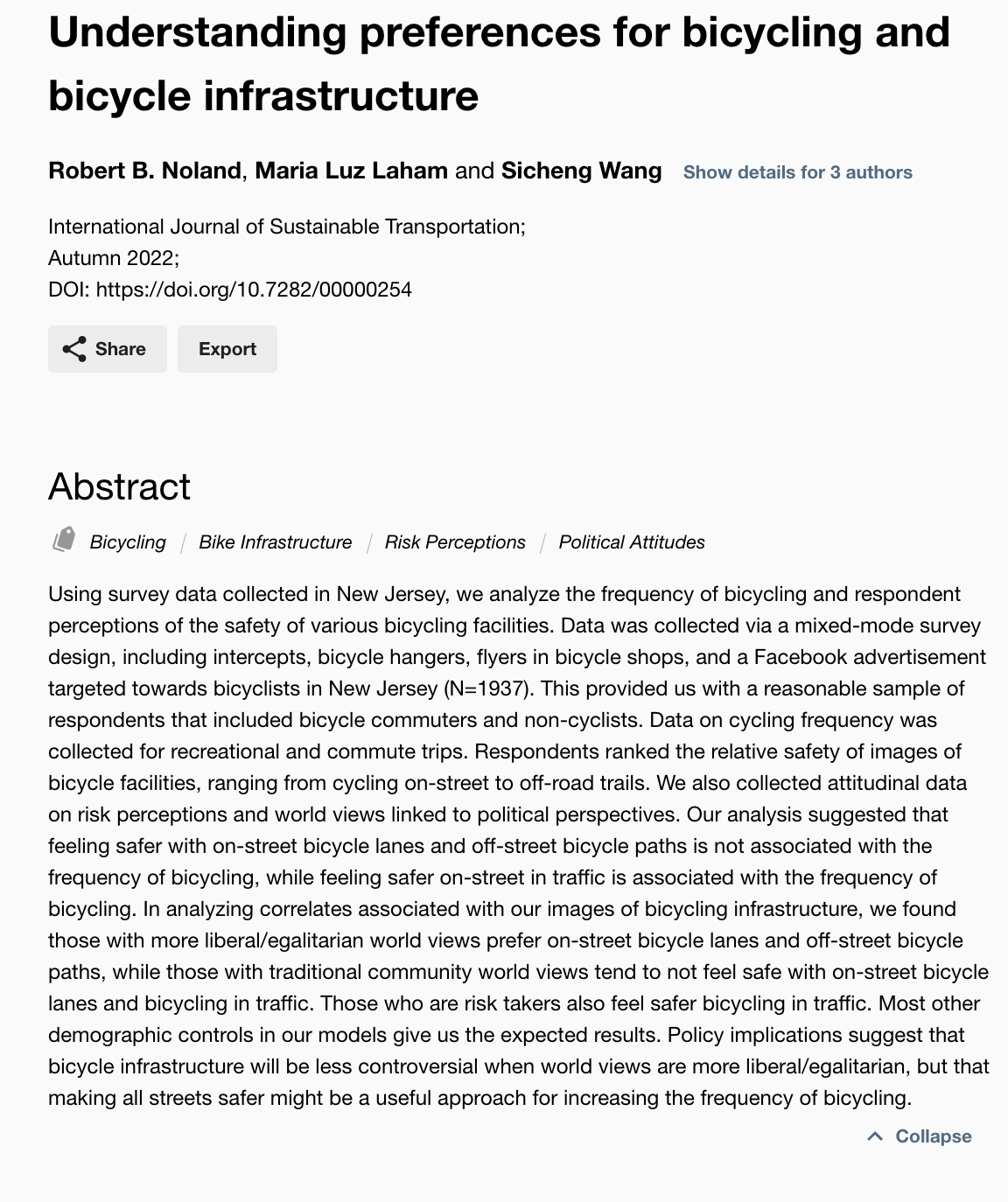
Using survey data collected in New Jersey, we analyze the frequency of bicycling and respondent perceptions of the safety of various bicycling facilities.
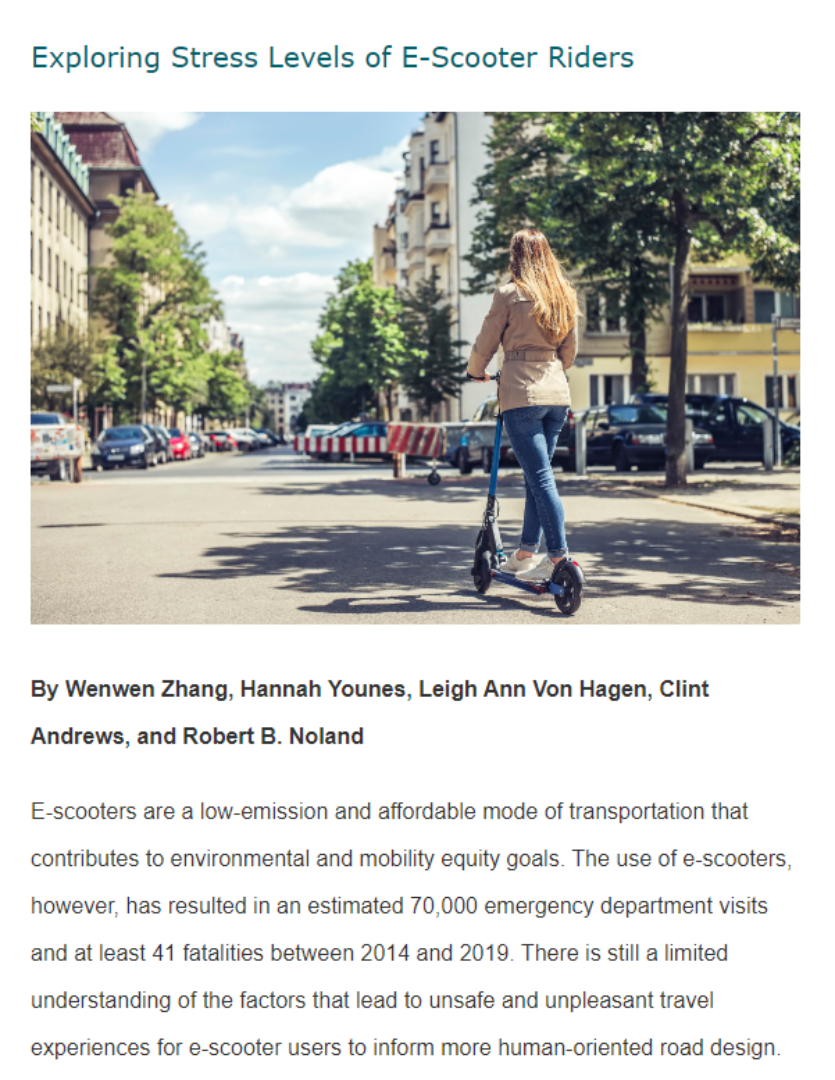
The results of this pilot data collection effort provide insights on the potential use of the latest sensor technology and computer vision algorithms to understand travel behavior for new and emerging transportation modes.
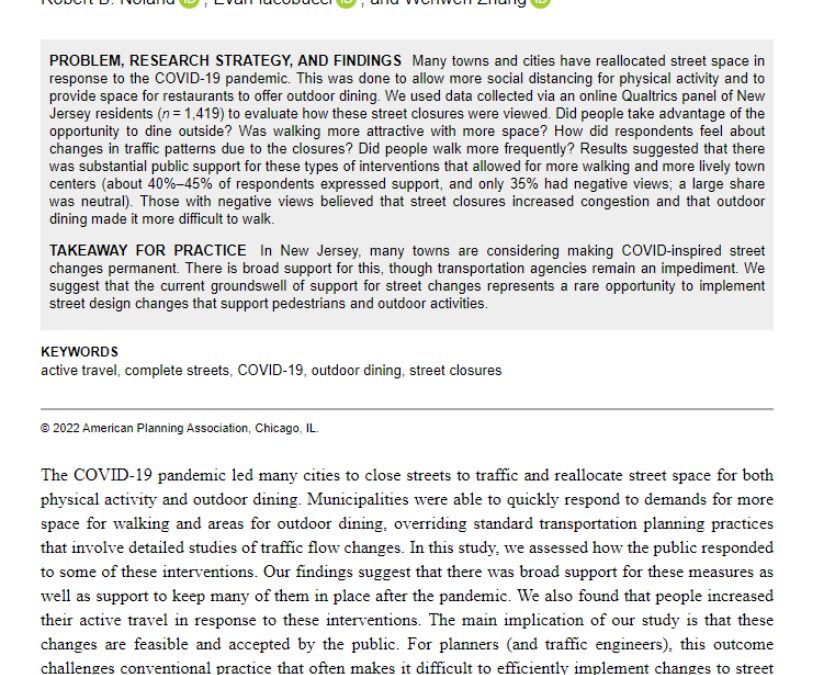
We suggest that the current groundswell of support for street changes represents a rare opportunity to implement street design changes that support pedestrians and outdoor activities.
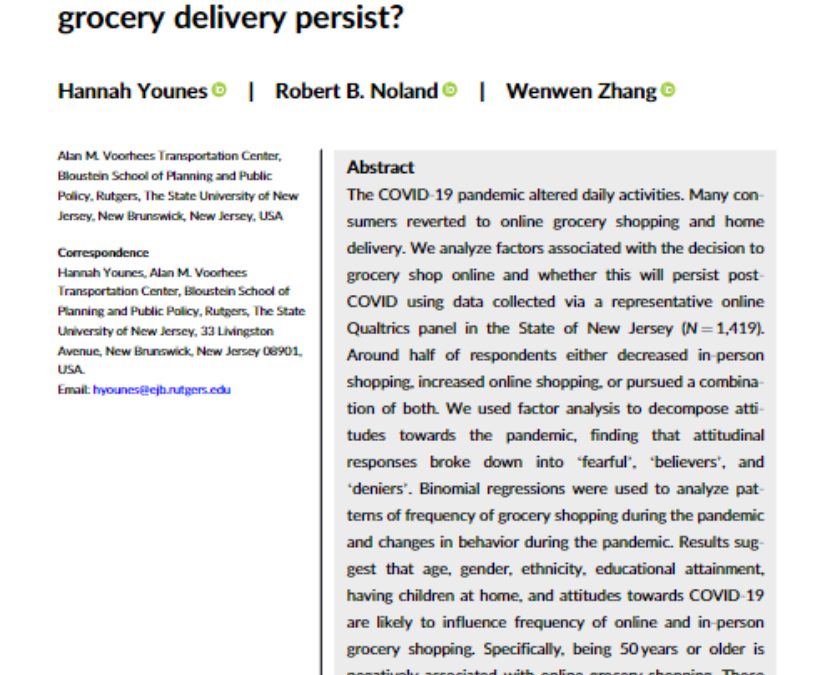
We analyze factors associated with the decision to grocery shop online and whether this will persist post-COVID using data collected via a representative online panel.
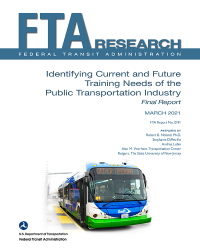
This report identifies the training needs of the public transportation industry.
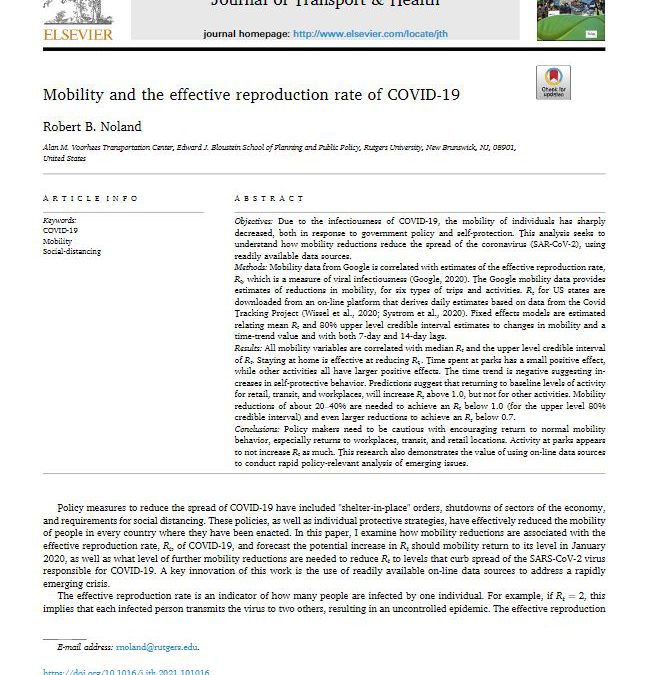
In an effort to understand how changes in mobility are associated with the spread of the coronavirus, mobility data from Google correlated with estimates of the effective reproduction rate, a measure of viral infectiousness.
Induced travel elasticities associated with new road capacity are typically estimated for roads of higher functional classifications, such as interstate freeways and principal arterials. These are estimated as “own” elasticities, that is an increase in lane kilometers...
There is a growing perception that e-scooters are more dangerous than bicycles and e-bikes, with towns implementing measures to ban their usage. Yet, there is not much evidence from large scale surveys to substantiate this claim. Nearly 14,000 micromobility injuries...
We compare charging station accessibility for different income groups in the San Francisco Bay Area. Using a microsimulation model, we estimate charging station accessibility under varying battery range scenarios, assuming different income groups have vehicles with...
The New Jersey Micromobility Guide serves as a resource for micromobility users across the state, collecting and summarizing the laws and safety best practices that can make riders safer. Micromobility, which includes e-bikes, e-scooters, and other low-speed devices,...